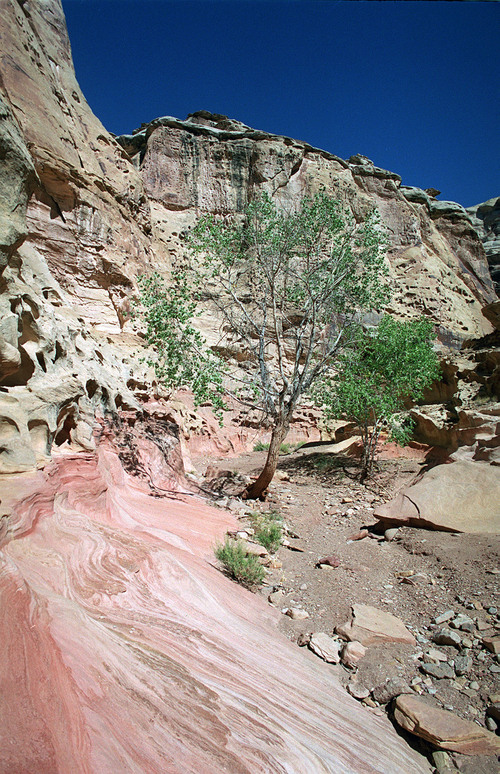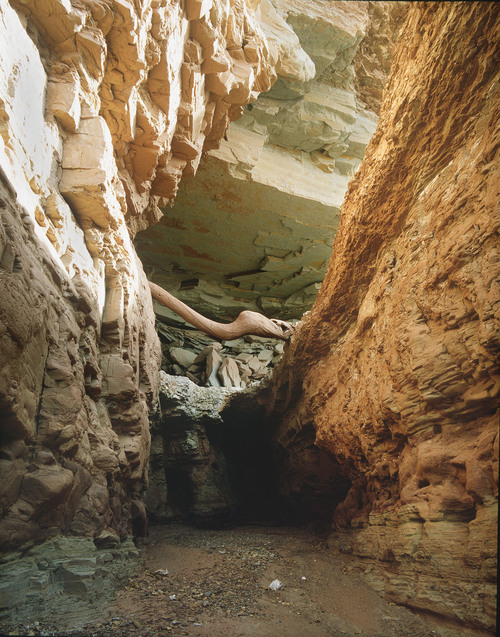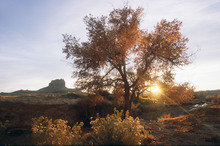This is an archived article that was published on sltrib.com in 2014, and information in the article may be outdated. It is provided only for personal research purposes and may not be reprinted.
Utah park officials are studying how to expand the boundaries of the 3,500-acre Goblin Valley State Park nearly 40-fold — encompassing areas popular with OHV riders, hikers, canyoneers and campers.
Last fall's federal government shutdown put numerous southern Utah state parks in the spotlight as alternative destinations after the gates closed on Capitol Reef, Canyonlands, Glen Canyon and other national park units.
The influx of visitors to Goblin Valley highlighted problems this area north of Hanksville has experienced in recent years, as more outdoor enthusiasts discover this sandstone wonderland of reefs and narrow canyons rich in ancient rock art, wildlife and relic plant communities.
The federal land around the park, much of it in the renowned San Rafael Swell, is under increasing pressure from recreational use, leaving a string of user-created trails, human waste and other impacts.
The proposed expansion of the state park, which requires the cooperation of the federal Bureau of Land Management, would contain such damage, better serve the recreating public and generate an economic boost to Emery County, according to Tim Smith, Utah State Parks southeast region director.
"We could do better than the current condition. There are problems with overuse and a park could pay for itself," Smith said.
BLM officials have yet to see a formal proposal, but welcomed "working with the state to see how we could partner to further support recreation in the area," said agency spokeswoman Megan Crandall.
Goblin Valley is one of the most profitable parks in the state's 43-unit system and visitation has doubled over the past four years to more than 90,000 last year. Because the park's 24-site campground is full every night for about six months a year, dispersed camping has increased around the park and down Wild Horse Creek.
"It's causing serious impacts to surrounding lands. There are user-developed roads and camp sites," Smith said. "Thousands of people camp down there and there's not a restroom."
The San Rafael Swell is one of Utah's many stunning natural landscapes, yet it enjoys little formal protection. It is particularly beloved by Wasatch Front residents, who can get there in just three hours and enjoy world-class desert scenery free of tourist throngs.
Yet Emery County reaps little from its outdoor recreation, in contrast to Grand, Wayne and Kane counties, which benefit from nearby national parks and monuments that lure high-spending international visitors. A state park in Emery County can help assure visitors leave a little cash behind, Smith said.
Under the state's plan, a 132,500-acre fan-shaped swath to the west and north of Goblin Valley would be added to the park. The new park would include popular features such as Little Wild Horse Canyon, Temple Mountain, the San Rafael Reef, and Ding and Dang Canyon.
Also included are 25 checkerboard sections of state trust lands, about 16,000 acres, and much of the Crack Canyon Wilderness Study Area, along with the Rock Art and San Rafael Reef areas of critical environmental concern, or ACECs.
Establishing a state park would require either a land exchange, probably through Rep. Rob Bishop's ongoing public lands process, or a state partnership with the BLM.
Visitors would be subject to the park's $8-per-vehicle fee, which would generate revenue to develop camp areas, trailheads, bike trails and other recreation amenities.
Emery County officials support the park concept, but note that the details have yet to be worked out.
"That area on the southeast side of Crack Canyon is the busiest place in the swell and it's the farthest from the BLM field office in Price. The management isn't keeping up with the use," said Ray Petersen, the county's public lands coordinator.
Wilderness advocates look on the proposal with some suspicion, although they acknowledge the area around Goblin Valley is getting overrun.
"The swell should be protected for the beautiful and remote place that it is with plenty of wilderness," said Scott Groene, executive director for the Southern Utah Wilderness Alliance. "We have been opposed to state control of public lands because of what we have seen taking places in other places, but we are open to talk to people about new ideas."
State officials said the uses of the land would remain unchanged under their park scenario. The wilderness study area would be limited to non-motorized recreation, grazing allotments would be preserved, and designated OHV route would remain. Some of the dispersed camping areas would be officially designated, while others in sensitive areas would be retired.









